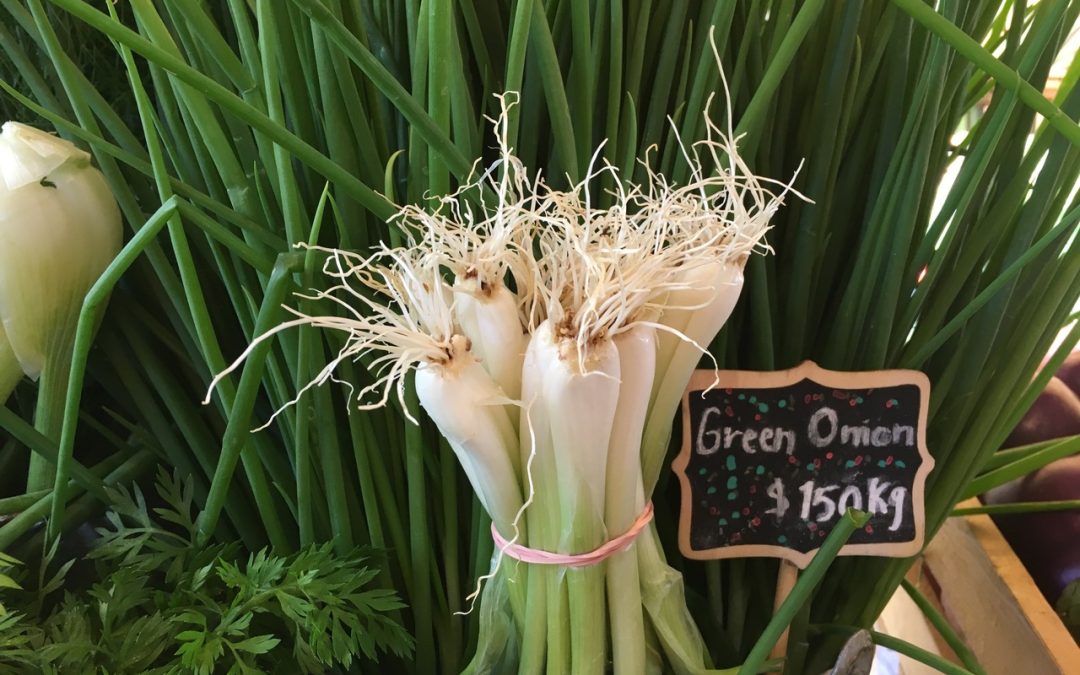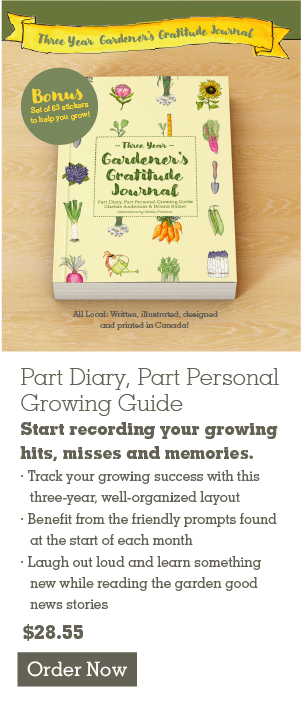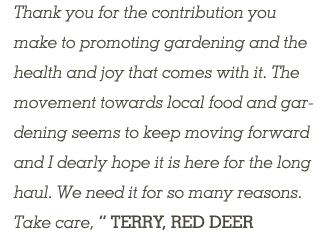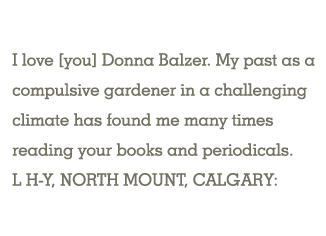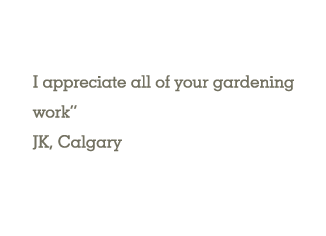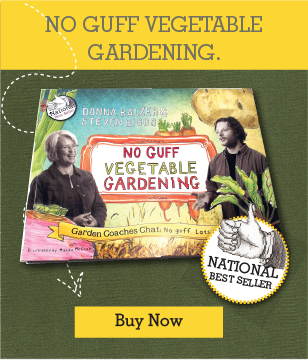…When COVID hit, you know, we realized it doesn’t take long for supermarkets to fall short and not have what they need if the borders are closed. We know in Quebec, about 70 percent of all the vegetables that we eat in the winter come from California….
The local food shed is an an act of resiliency in the face of climate change and everything that’s going to happen in the next decade, says Jean Martin Fortier, farmer, author, trainer and educator from Ferme de Quatre Temps farm in Quebec.
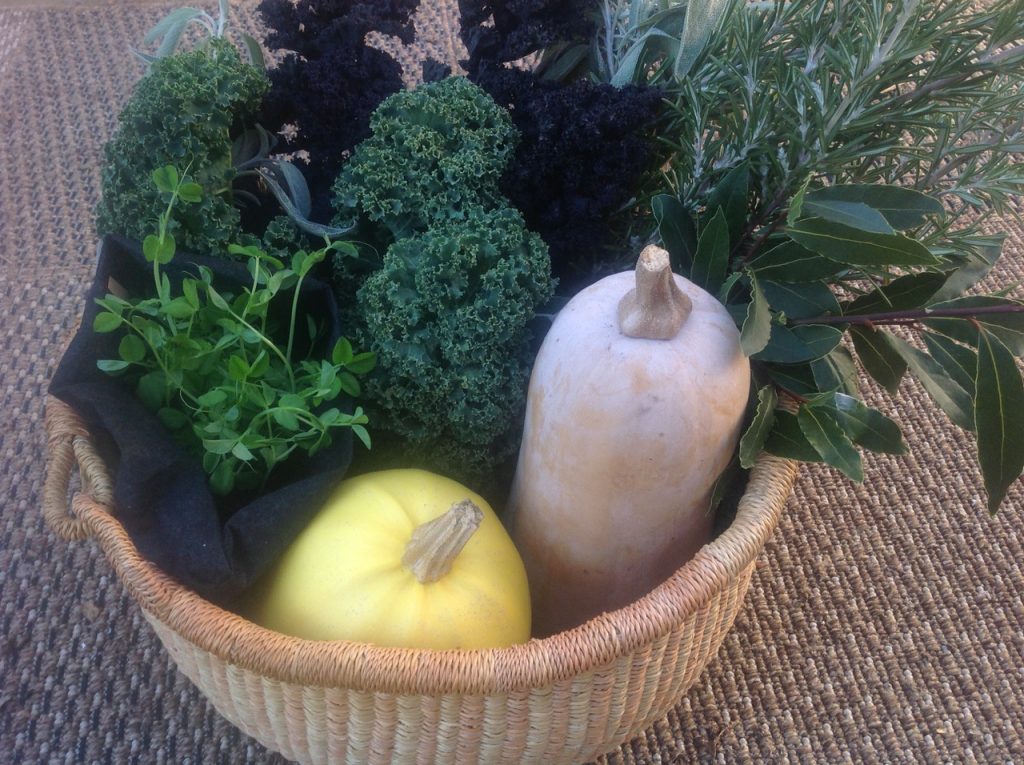
A mixture of stored fall harvest such as squash combined with winter-grown greens makes a northern winter dinner delicious. Photo by Donna Balzer
THE FARM
During an interview* for our Food, Garden Life Podcast with Steven Biggs, Fortier explained about his farm of the future and shared ideas from his newest book, The Winter Market Gardener. Initially financed by a Quebec businessman, the farm is diverse with greenhouses, cattle, hogs, chickens and a big market garden right in the middle. Fortier also trains young market gardeners on site and also supplies food year-round to local buyers and restaurants. In other words, the farm of the future is already here with the food Fortier grows all winter on his farm.
The farm was started on the premise that we wanted to create what the farm of the future would look like, and that farm would be holistic. It would have all the animals working in synergy with the gardens, and the manure would serve for growing the veggies and all the veggies would be transformed in the culinary program.
(Our sponsor) is very interested in collaborating, and he wants to talk about the revolution and showcase what’s possible. I really wasn’t interested in working with with a billionaire. It just didn’t make any sense in my mind. Then I met (the billionaire) and we hit it off right, right from the get go. I was super stimulated, highly interested. And I was also excited about having a school where I could teach all the market gardening tips and tricks that I had been developing over the years. And so that’s, that’s how it started.

A screen grab from Fortier’s Farm Website shows some of the food he grows and harvests in winter
WINTER GROWING
We have a greenhouse and then we having mini-tunnels inside the greenhouse. And just by having (this) extra shelter, we’re able to grow and harvest from November to April and that’s very different from (most commercial) greenhouse systems, especially in the winter. (A big greenhouse with lots of square footage, even acreage usually has high tech systems including specialized light and heating.) We’re growing spinach, we’re growing kale, we’re growing Swiss chard, we’re growing up to 30 different greens that are frost resistant and frost hardy.
(Most commercial greenhouses are) very input intensive and that’s really not what we’re doing. We’re going low tech. We are working with the biology of plants. We’re adapting the plants with different strategies that we implement. We’re adapting them to the cold, so they become more and more frost hardy. We’re working with cultivars that have been selected for their cold hardiness. And we’re really growing a product like these vegetables that are very different in terms of taste, in terms of texture than that of the summer months.

Winter vegetables grown in my own winter greenhouse on Vancouver Island with very little extra heat include radish, sorrel, arugula and lettuce. Now that I have moved to Calgary I am encouraged by Fortier’s success with limited heat in Quebec using mini-tunnels under his bigger greenhouse structures.
CROPS SELECTED
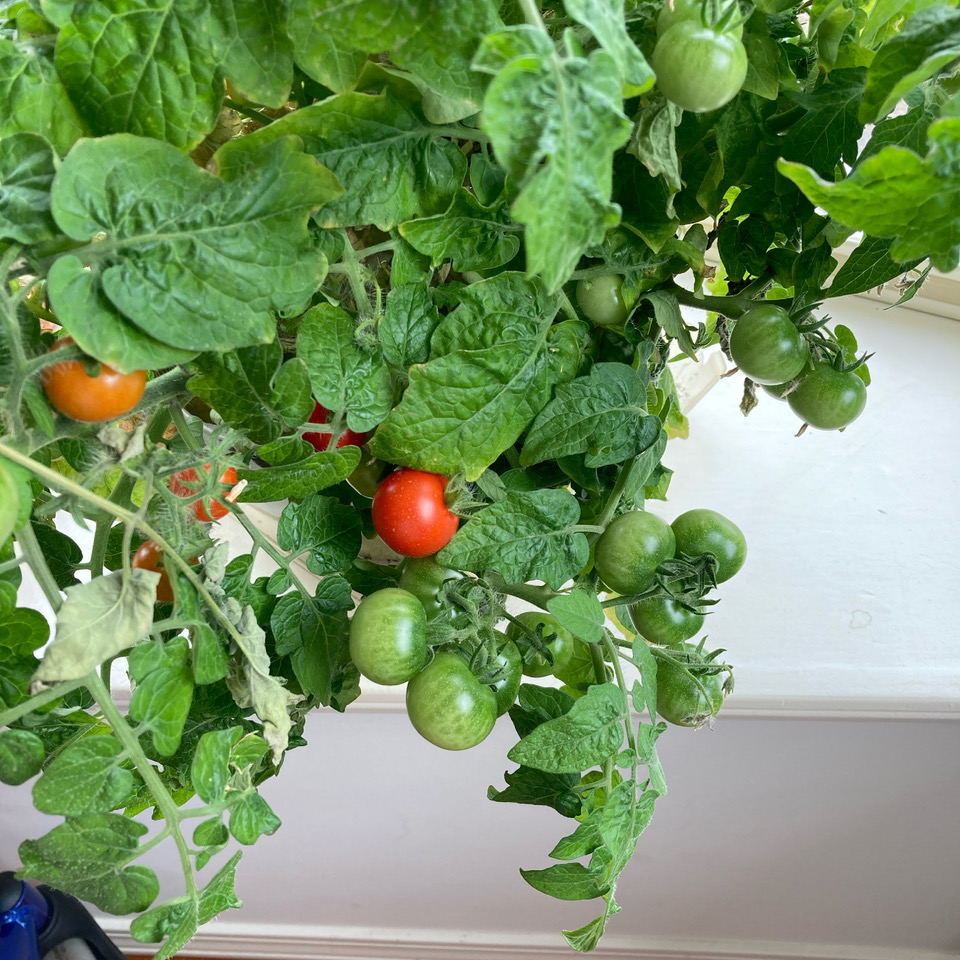
Crops like tomatoes are not mentioned in the Winter Market Gardener because they are better suited to summer growing when days are longer and weather is warmer. Donna Balzer photo of a micro-dwarf tomato grown under lights in her home in winter.
We’re growing low tech. We are working with the biology of plants. We’re adapting the plants, with different strategies, so they become more and more frost hardy. We’re working with cultivars that have been selected for their cold hardiness and we’re growing these (winter) vegetables that are very different in terms of taste, in terms of texture than (we grow) in the summer months.
And so we’re working with the northern climate to grow greens that are world class, epic, amazing. It’s very different, and yeah, we’re getting better results (in winter). I don’t know if your listeners are aware of this, when COVID hit, we realized it doesn’t take long for supermarkets to fall short and not have what they need if the borders are closed. We know in Quebec, about 70 percent of all the vegetables that we eat in the winter come from California….And from abroad. So we’re very dependent on on vegetables grown outside the province, outside the country. And so when COVID hit, the government decided that they wanted to be more self sufficient. We started to talk about food sovereignty. And their response to that was to just invest a lot of money to double the number of greenhouses here in Quebec. But unfortunately, these greenhouses were high tech and, you know, they’re growing strawberries in the winter for example. And (co-author) Catherine and I just felt this is not where this should be going. And that’s, that’s why we wrote our book in the first place.
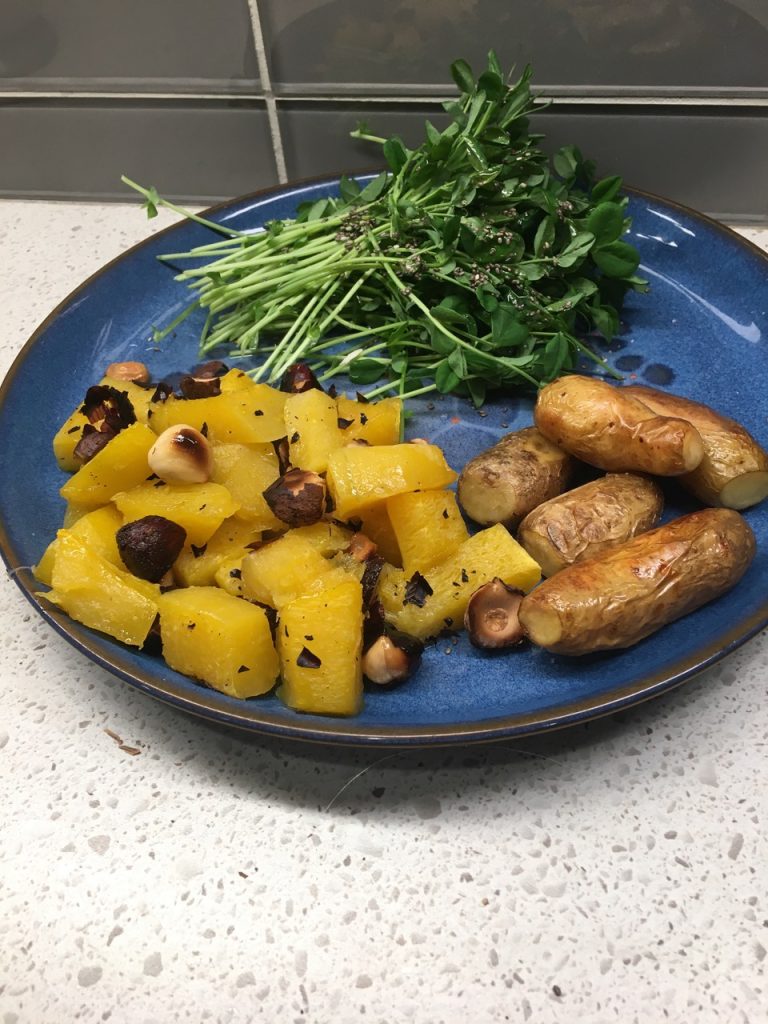
A winter dinner at Donna’a house includes potatoes from the root cellar, Winter squash saved from fall on the kitchen counter, and fresh pea greens grown under lights in the dining room. Donna Balzer photo
Steven Asks: We have a lot of home gardeners tuning into the show and, and I suspect they might be asking the question: Can home gardeners take some of these things that you’re doing and use them in a home garden setting?
So what we do here is on a bigger scale, (but) it could be done in a home garden. You know, I’ve just opened the restaurant near my home farm and we have a winter greenhouse that’s providing veggies for the restaurant for the winter. It’s just about having a shelter, and it is not complicated. It’s just about knowing firstly that it’s possible, having some equipment, but not that much, following a planting schedule and knowing which cultivars work (in winter.) Everybody knows kale, but which kale (is best?) There’s a lot of different cultivars out there.

Row covers, also known as floating row covers or protective covers, hold what little heat you have inside the greenhouse. By placing wire cables or a heat mat beneath the fabric layer you can keep the soil from freezing in your winter greenhouse even though you are using very little power.
(Inside the greenhouse) you also put another little (protective) tunnel. You use these woven fabrics (like Agribon) that are kind of insulating blankets. (These blankets are) very light and (they) let light through. But (they also) retain the heat. So they have a thermal capacity. So the heat radiating from the ground kind of comes out, and then the blanket kind of keeps it inside the tunnel because we’re creating (a mini greenhouse within the greenhouse.)
So you open them in the day, you close them during the night, or you leave them on. And you just add a little bit of supplementary heat, like, let’s say, wire for gutters, you know, to defrost the gutters. You plug (the cables) into your 110 AC. You can lay that on your beds. As long as you have two covers and you plant at the right dates and the right cultivars with the right spacing you’re good to go.
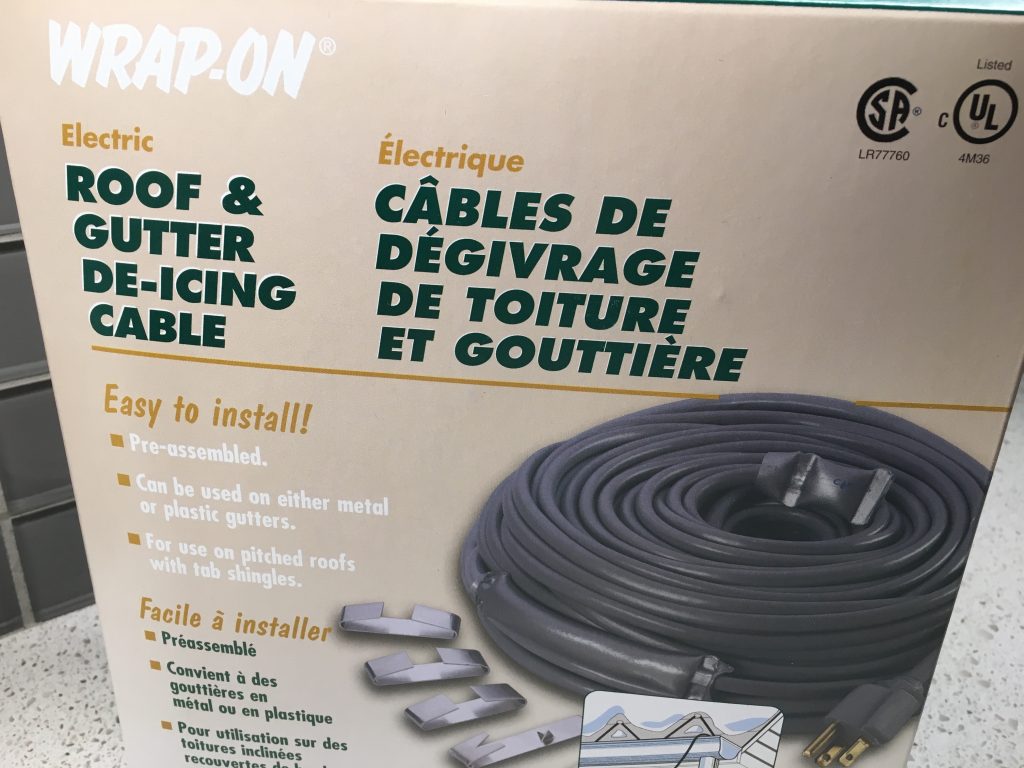
Heating cables, sold by hardware stores are sold to heat your rain gutters and roofs in winter will stave off ice. They also work to keep soil warm in winter when laid on planting beds inside your greenhouse.
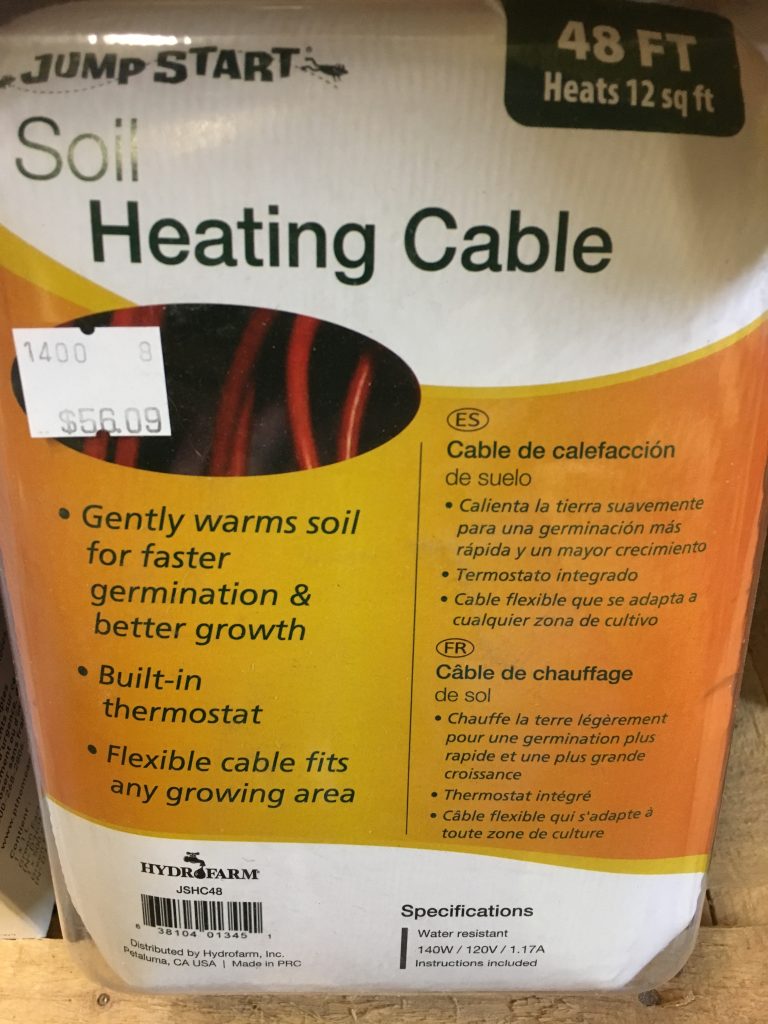
Seed catalogues or specialty stores offer special heating cables for soil beds to provide heat with the least amount of electricity.
I don’t know if your listeners know this, but where we are on our parallel, you know, as of the mid November, there’s under 10 hours of daylight per day. So even if you’re heating at, you know, 35 degrees Celsius, the greenhouse, there’s no growth because there’s not enough light for the plants to really grow. And so from mid November, all the way to February, that’s pretty much what’s going on. So we need to work with plants that can tolerate some cold, but then can also grow under, you know, lower. Lower light conditions. And so we’ve categorized them in three and you know what we can say is like the most frost hardy is Definitely spinach and spinach grows really well under low light condition.
Kale is another workhorse It’s just amazing kale is really beautiful in that way But there’s others that people don’t know as much. Mache, for your listeners that have perhaps been in Europe, Mache in France is a very popular salad. It really grows well in the winter. But you know, there’s all these Asian greens that people perhaps know about, Tat soi, pac choi,, all these mustards.

Mache is a winter-tolerant green more common in Europe than North America. Donna Balzer photo.
Our goal is to work with 25 different chefs here in Montreal. We’re supplying them year round with these with these greens. So it was a lot of trial and error, right dates, right cultivar, right spacing. Because the spacing, let’s say we’re planting kale in our beds, it won’t be the same spacing that we put in the summer.
So finding all these things, you know, took us a few years. And with the book, our goal is to share that so that people can be. You know, following the right procedures, starting off with, a game plan that already is, guaranteed to work. But it’s also about just planting the seed in people’s mind, gardener’s mind, that, you know, at the end of the summer, just keep planting. It’s totally possible.
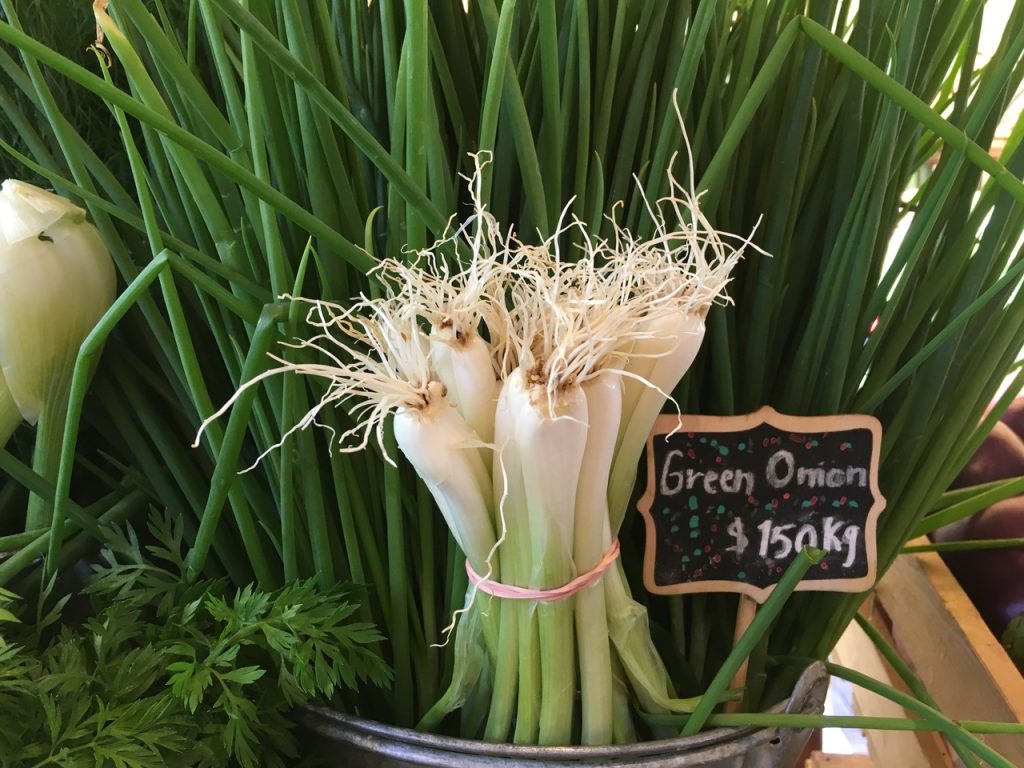
Green onions are one of the crops discussed by J. M. Fortier in his most recent book.
And thanks for having me on. It’s always a pleasure to talk about this. Obviously, I’m very passionate about this and people want to know more. They can check out the website, the Market Gardener Institute. We offer classes on winter farming. It’s kind of like a new frontier.
*Interview Edited for clarity and space. The entire interview can be heard on the Food, Garden, Life Podcast and on YouTube:
Youtube Link: https://youtu.be/0JDskaZlhpE
Podcast link: https://share.transistor.fm/s/73d68daf
